Table of contents
Kombu seaweed is a brown algae. Japanese leaf kelp ( Saccharina japonica) makes up a large part of kombu. It is usually available dried. Organic quality is available online.
Use in the kitchen
What is kombu? Kombu is a Japanese term for edible seaweed - mostly represented by the species Saccharina japonica (synonym Laminaria japonica), which refers to Japanese leaf kelp or ma-konbu (real konbu) or sea kale. In English-speaking countries, kombu is also classified as kelp seaweed. You can find out which other species are included in the general term kombu seaweed below in the general information.
In its countries of origin, the seaweed is available fresh or dried in pieces, flakes or powder form. The dried version is much more common - but after soaking in water or boiling, the seaweed becomes soft again. The brown strips taste slightly of the sea and - depending on their origin - mild and sweet or rather strong. The consistency ranges from firm to soft, depending on how long it is cooked.
How can you prepare kombu? Kombu is not only suitable for refining sushi rice, but has a wide range of applications. The kombu seaweed provides a pleasant aroma in all kinds of cooked dishes, especially Asian ones. Kombu is traditionally used as an additive for soups and broths (dashi). The intense umami aroma is ideal for seasoning. The seaweed also gives salads, stews and other vegetable dishes a spicy note. Even small pieces are enough. Kombu can also be eaten fresh, marinated or fried. In Korea and China, Japanese leaf kelp is also added when cooking beans to enrich the dish with nutrients and make it easier to digest. Pickling seaweed strips in a sweet and sour sauce is also traditional. These are eaten as a snack with green tea. In Japan, kombu is used to make a salty-tasting tea (kombucha).
Kombu seaweed has a high iodine content (see below). Therefore, make sure you consume a healthy amount. The iodine content can be reduced by more than 95% by soaking it for several hours with water changes and/or boiling.
Kombu seaweed can be eaten raw, but only to a limited extent due to its high iodine content. Whether the kombu seaweed, which is mostly available in dried form in Europe, is of raw food quality depends on the drying process used and the processing.
Vegan recipe for Japanese kombu seaweed salad
Ingredients (for 4 people): 20 g dried kombu seaweed (organic), 3 stalks of spring onions, 1 onion, 3-4 carrots, 1 cucumber, 1 chili pepper, 20 g coriander, ½ tbsp grated ginger, 3 tbsp sesame oil, 20 g black sesame seeds, 100 ml sweet chili sauce, 1 lime, some salt andpepper.
Preparation: Rinse the kombu seaweed, soak in a bowl of cold water for about 10 minutes and then drain. Rinse and dry the vegetables and coriander. Cut the spring onions into thin slices and the onion into thin rings. Peel the carrots and cut them into thin julienne strips together with the cucumber. Finely chop the chili and coriander. Mix the seaweed, spring onions, onion, carrots, cucumber, chili and coriander in a large bowl. Add the ginger, sesame oil, sesame seeds and sweet chili sauce. Squeeze the lime over the bowl. Season with a little salt and pepper. Mix everything well and serve.
Many recipes on the internet use a large amount of algae. We recommend paying attention to your iodine intake and therefore suggest using a reduced amount of algae.
Vegan recipes with kombu seaweed can be found under the note: " Recipes that have the most of this ingredient ".
| Not only vegans or vegetarians should read this: Vegans often eat unhealthily. Avoidable nutritional errors. |
Purchasing - Storage
Supermarkets (e.g. Coop, Migros, Denner, Volg, Spar, Aldi, Lidl, Rewe, Edeka, Hofer, Billa) and organic supermarkets (e.g. Alnatura, Denn's Biomarkt) often do not stock kombu seaweed. You will have more luck in Asian shops or online shops - there you will usually find Japanese leaf kelp in the form of dried strips. Organic quality is well represented in the online range.
When it comes to seaweed products, you should make sure that they contain information on the iodine content, the maximum recommended daily intake and how to prepare them. This is the only way for consumers to estimate how much iodine they are consuming and avoid consuming too much.
The availability of kombu seaweed varies depending on the size of the store, catchment area, etc. You can find our recorded food prices for the DA-CH countries above under the ingredient image - and by clicking you can see their development at various suppliers.
Found in the wild
Japanese leaf kelp is found in cool waters of the temperate northwest Pacific (along the coasts of China, Japan, Korea and Russia). The brown algae grows on hard substrates near coasts at a depth of about 10 m. 1
Storage tips
Store dried kombu in a dry, cool place away from light. This will ensure that the seaweed lasts a long time. After opening the package, store the seaweed in an airtight container and consume it quickly.
Ingredients - Nutritional values - Calories
Dried kombu seaweed has around 240 kcal and 1.2 g fat per 100 g. The fiber content (27 g/100g) and protein (8.2 g/100g) is also increased due to the loss of water during the drying process. The salt content is very high at around 7 g per 100 g (296.3% of the daily requirement). 2
The iodine content is also extremely high at around 295 mg per 100 g (=295,400 µg) (this corresponds to more than 196,000% of the daily requirement) - but it can vary considerably depending on the algae, growing region, storage, processing, etc. Other types of algae also have a very high iodine content, such as bladder wrack (300 mg/100g) and arame algae (70 mg/100g). 2 Therefore, make sure that you only consume small amounts of algae (see the chapter "Danger - Intolerances - Side Effects").
Dried kombu seaweed is also rich in folate (260 µg/100g; 130% of the daily requirement). Bladderwrack (180 µg/100g), arame seaweed (180 µg/100g) and kelp (182 µg/100g) have a similar content. Dried dulse has about seven times as much folate at 1,269 µg/100g.
90 µg of vitamin K are found in 100 g of dried kombu seaweed (120% of the daily requirement). A similar amount is found in arame seaweed (66 µg/100g) and bladderwrack (66 µg/100g). 2 At 830 µg/100g, chard contains a particularly high amount of vitamin K. 11
Kombu seaweed also contains a lot of glutamic acid. This gives the seaweed its spicy umami taste.
The complete ingredients of Kombu seaweed, the coverage of the daily requirement and comparison values with other ingredients can be found in our nutrient tables. In the article Nutrients explained you will get a detailed insight into the topic.
Health Effects
Alginates and fucoidans are linear, non-digestible polysaccharides found in the cell walls and intercellular spaces of brown algae. The amount of polysaccharides in algae varies between 4% and 76% of the total dry mass of brown algae. Modern pharmacological studies show that the polysaccharides of Japanese kelp have a wide range of biological activities, including anti-tumor, anti-thrombotic, anti-atherosclerotic, anti-hypolipidemia and anti-hypoglycemia effects. Antioxidative, anti-inflammatory, nephroprotective and immunomodulatory properties have also been observed. Kombu is also useful for preventing lifestyle-related diseases such as obesity and diabetes. 5, 6,18
Secondary plant substances
Many of the health effects of Japanese kelp can be attributed to the secondary plant substances it contains. Our article on secondary plant substances provides an overview of the classification of substance groups, their occurrence in food and possible effects on humans. Japanese kelp contains the following secondary plant substances, among others: 18,19
- Isoprenoids: Triterpenes: phytosterols (fucosterol, thunberol); Tetraterpenes: carotenoids (carotenes: beta-carotene, xanthophylls: fucoxanthin)
- Polyphenols: bromophenols; Phenolic acids: hydroxybenzoic acids (gallic acid, protocatechuic acid, p-hydroxybenzoic acid), hydroxycinnamic acids (p-coumaric acids); flavonoids: flavonols (quercetin hexoside, quercitrin, kaempferol), flavanones (liquiritgenin, isoliquiritgenin), flavones (apiin, baicalin, chrysoeriol, amentoflavone), isoflavonoid (formononetin, diosmetin); phlorotannins (fuhalol, phlorethol, fucol, fucophlorethol, eckol, carmalol)
However, it should be noted that the composition of secondary plant substances in Japanese kelp can vary depending on the variety, time of harvest and growing conditions. Therefore, quantities are only of limited use and should only be understood roughly.
Fucosterol extracted from brown algae inhibits the formation of fat cells and the storage of fat cells in tissue. The total carotenoid content of kombu brown algae is significantly lower at 2696 mg/100g dry weight than in arame (3846 mg/100g) and wakame (7515 mg/100g). Japanese leaf kelp (kombu) is a good source of fucoxanthin, which has liver-protective, antioxidant and anti-inflammatory effects. 19
Amentoflavone is the main flavonoid in kombu and has antioxidant, anti-inflammatory and anti-diabetic effects. According to literature, baicalin inhibits the growth of various types of cancer. Gallic acid is a powerful antioxidant and has strong cytotoxic effects on prostate and connective tissue cancer. According to a study, the total phenol content in brown seaweed varies significantly: arame (31.92 mg/100g), hijiki (2.35 mg/100g), kombu (0.28 mg/100g) and wakame (0.79 mg/100g). 19
Bromophenols show therapeutic potential in thrombotic diseases such as stroke and heart attack. 18 Brown algae are known for their high content of phlorotannins, which can make up to 25% of the dry weight. Phlorotannins lower blood sugar levels by slowing the digestion and absorption of carbohydrates in the small intestine.
Dangers - Intolerances - Side effects
The iodine content of Japanese leaf kelp (especially dried) can be over 1000 mg/kg and is therefore very high. However, it is subject to very large fluctuations. When consuming kombu seaweed, as with many other saltwater seaweeds, one should ensure that one consumes a healthy amount. 1
How much kombu can you eat? In 2004 and 2007, the Federal Institute for Risk Assessment assessed the health risks of dried seaweed and classified dried seaweed products with an iodine content of 20 mg/kg and higher as harmful to health and therefore not marketable. Impaired thyroid function in the form of hyperthyroidism or hypothyroidism with or without goiter can be the result of an iodine excess (an iodine overdose). This risk exists particularly in older people with functional autonomy of the thyroid and in patients with a (genetic) predisposition to an autoimmune thyroid disease (Graves' disease or autoimmune thyroiditis). In certain circumstances, this can lead to a life-threatening metabolic derailment. A long-term, chronic iodine excess of 1000 μg/day or more in children, adolescents and adults can also cause health damage. The BfR therefore recommends a maximum intake of 500 μg iodine per day. 3 In 2002, the Scientific Committee on Food ( SCF) set a tolerable maximum amount of 600 μg/day.
The recommended iodine intake according to EFSA (2014) is 150 μg/day for adults. However, the amount of brown algae biomass that corresponds to a certain amount of iodine varies greatly. Processing processes (e.g. drying) can significantly reduce the iodine content of brown algae, but the iodine content is still high afterwards. The above-mentioned maximum daily iodine intake for adults (600 μg) can be achieved by consuming 0.2-11 g of processed, dry brown algae. 12
In countries where the population has had sufficient iodine supply over several generations, such as the USA or Asian countries, the probability of health problems occurring is very low or only occurs with larger amounts of iodine (1000 μg and more). 3
In 2018, the federal states' food inspection authorities tested 165 samples of dried seaweed for a number of chemical elements. Measurements of cadmium, lead and arsenic in particular showed high concentrations. One in ten samples tested exceeded the legal maximum content of 3 mg of cadmium per kg of dried seaweed for use in food supplements. High concentrations of lead (1 to 10 mg/kg) were also found, but there is currently no legally defined maximum level for lead in seaweed. The average arsenic content was high at 25 mg/kg, but almost exclusively in organically bound form, which has not yet been adequately investigated for its harmful potential. 4
Folk medicine - natural medicine
For more than 2000 years, kombu has been traditionally used in China and other Asian countries as a therapeutic agent that has an expectorant and decongestant effect. It is also used to treat weight loss. 5 Kombu is also known for its effect on strengthening hair and improving the appearance of the skin.
Ecological footprint - animal welfare
Seaweed forests on the coasts provide a livelihood for many creatures. They are also important for the global carbon and nutrient balance. They counteract eutrophication (the accumulation of nutrients in a system, e.g. due to the enormous input of fertilizers from agriculture) because they can absorb large amounts of nitrogen and phosphorus compounds. 1
Freshly harvested seaweed can even have a negative CO 2 footprint, ie it can absorb more CO 2 than is emitted during production. 16 Life cycle analyses of various marine aquacultures show very different results. 10 In addition, there is also the ecological balance of processing (e.g. drying), which can have a strong impact on the CO 2 footprint. Dried sugar kelp ( S. latissima), for example, was calculated to have a global warming potential of 6.12 kg CO 2 eq/kg. 17 This means that seaweed is still far below the CO 2 footprint of beef (13.6 kg CO 2 eq/kg), but is much higher than that of vegetables (e.g. zucchini : 0.2 kg CO 2 eq/kg). 7
Macroalgae can absorb more CO 2 than forests on land. In addition, brown algae secrete some of the absorbed CO 2 in the form of mucus, which sinks to the sea floor and can remain there for a very long time - thus acting as a carbon sink. 15
For detailed explanations of various sustainability indicators (such as ecological footprint, CO2 footprint, water footprint), see our article: What does the ecological footprint mean?
Worldwide occurrence - cultivation
Macroalgae have been used as food for many centuries. In recent decades, production has increased significantly. The species Saccharina japonica is one of the most economically important brown algae. Of the 15 million tonnes of macroalgae produced commercially each year, six million tonnes are Saccharina japonica. 13
It is intensively cultivated on a large scale in Asia 8, and accounts for the highest production volume in aquaculture (> 10% of total global aquaculture production). China is the largest producer, followed by North and South Korea. 1
Further information
In addition to the 'real' Kombu, other Saccharina species are used as Kombu:
- Karafuto-Kombu (“Sachalin-Kombu”), the sugar kelp ( Saccharina latissima)
- Mitsuishi, Hidaka or Dashi kombu ( Saccharina angustata)
- Naga kombu ( Saccharina longissima)
- Rishiri kombu ( Saccharina ochotensis)
Alternative names
Japanese leaf kelp is also called kombu seaweed (kombu seaweed, kombu algae), Japanese kelp, sea kale or ma-konbu (ma-kombu). Kombu (konbu) is called haidai in China and dasima in Korea.
In English the term kombu or Japanese leaf kelp is used.
Other applications
Brown algae are not only used for human nutrition, but also as a carbon source for the production of biodiesel and bioethanol. 1
According to the results of an initial study, the cultivation of the fast-growing brown alga Saccharina japonica may be a biotechnological method for cleaning seawater contaminated with the herbicide glyphosate. It is more environmentally friendly and less expensive than conventional methods. 9
Bibliography - 18 Sources (Link to the evidence)
| 1. | Aquakulturinfo de: Japanischer Blatttang. |
| 2. | ÖNWT Die österreichische Nährwerttabelle. Kombu, getrocknet (Seetang Kelp Braunalge). |
| 3. | Bfr.bund de: Gesundheitliche Risiken durch zu hohen Jodgehalt in getrockneten Algen. |
| 4. | Bvl.bund de: Sushi-Blätter häufig mit Schadstoffen belastet. |
| 5. | Luan F, Zou J, Rao Z, et al. Polysaccharides from Laminaria japonica: an insight into the current research on structural features and biological properties. Food Funct. 2021;12(10):4254-4283. |
| 6. | Shirosaki M, Koyama T. Laminaria japonica as a food for the prevention of obesity and diabetes. Adv Food Nutr Res. 2011;64:199-212. |
| 7. | Reinhardt G, Gärtner S, Wagner T. Ökologische Fussabdrücke von Lebensmitteln und Gerichten in Deutschland. IFEU Institut für Energie - und Umweltforschung Heidelberg. 2020 |
| 8. | Wang X, Yao J, Zhang J, Duan D. Status of genetic studies and breeding of Saccharina japonica in China. J Ocean Limnol. 2020;38(4):1064-1079. |
| 9. | Tang X, Shen L, Liu S, Gao J. Effective removal of the herbicide glyphosate by the kelp Saccharina japonica female gametophytes from saline waters and its mechanism elucidation. Chemosphere. 2021;274:129826. |
| 10. | Li J, Bergman K, Thomas JBE, Gao Y, Gröndahl F. Life Cycle Assessment of a large commercial kelp farm in Shandong, China. Science of The Total Environment. 2023;903:166861. |
| 11. | USDA United States Department of Agriculture. |
| 12. | Blikra MJ, Henjum S, Aakre I. Iodine from brown algae in human nutrition, with an emphasis on bioaccessibility, bioavailability, chemistry, and effects of processing: A systematic review. Comp Rev Food Sci Food Safe. 2022;21(2):1517–1536. |
| 13. | Hempel G, Bischof K, Hagen W, Herausgeber. Faszination Meeresforschung: ein ökologisches Lesebuch. 2. Auflage, korrigierte Publikation 2020. Berlin: Springer; 2020. 573 S. |
| 15. | Buck-Wiese H, Andskog MA et al. Fucoid brown algae inject fucoidan carbon into the ocean. Sustainability Science. 2023;120(1):e2210561119. |
| 16. | Zhang R, Wang Q et al. Environmental benefits of macroalgae products: A case study of agar based on life cycle assessment. Algal Research. 2024;78:103384. |
| 17. | Nilsson AE, Bergman K et al. Life cycle assessment of a seaweed-based biorefinery concept for production of food, materials, and energy. Algal Research. 2022;65:102725. |
| 18. | Jang H, Lee J, Park YK, Lee JY. Exploring the health benefits and concerns of brown seaweed consumption: A comprehensive review of bioactive compounds in brown seaweed and its potential therapeutic effects. Journal of Agriculture and Food Research. September 2024;17:101215. |
| 19. | Vlaisavljević S, Rašeta M, Berežni S, Passamonti S, Tramer F. Four selected commercial seaweeds: biologically active compounds, antioxidant and cytotoxic properties. International Journal of Food Sciences and Nutrition. August 2021;72(6):757–66. |

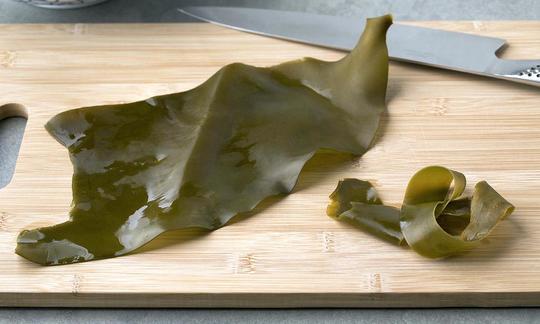

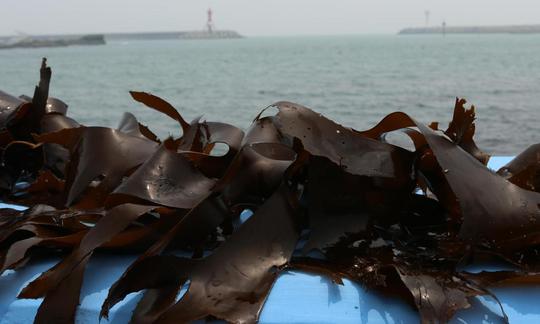

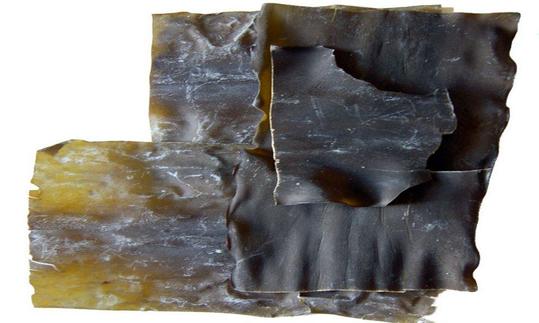

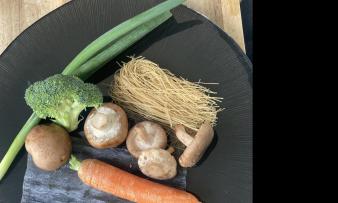
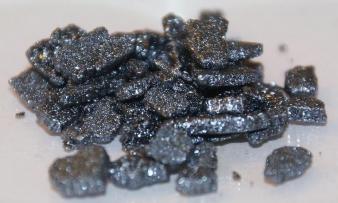




Comments